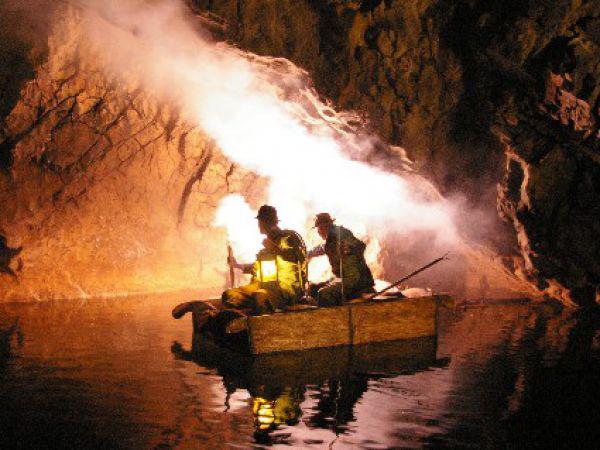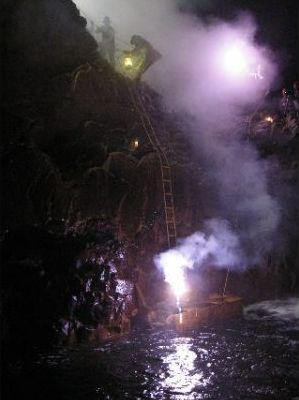

A project entitled the The Škocjan Okapnca-Cave and the Journeys of Its Explorers was wrapped up a few days ago at the Škocjan Caves park. The final product will be a documentary film which shows how the locals discovered the Škocjan underground more than 100 years ago, as well as how it is being explored today.
The film also shows the rich photo archive of the entire Škocjan Caves park. The documentary was three years in the making. It cost around 45.000 euros. Most of the funding was obtained from the European agriculture fund for rural development.
"Okapnca" is an old name for a cave. A room where dripstones grow. The locals were the first to walk in the Škocjan »okapnci«; the documentary tells us how they chiseled their way, walked through mud, conquered steep and narrow paths and protected themselves from slipping into the Reka river.
Borut Lozej, a memeber of the Divača caving club, is one of the explorers in the film. He says:"It was definitely more difficult in the past and everything took longer. Today, with the help of modern equipment, everything is simpler. They were very bold and they did an amazing job."
Tomaž Zorman from the Škocjan Caves park, who was in charge of the shooting of the documentary, added: "The workers, or the farmers, were the first who made the paths. Explorers with neckties came years later to discover the cave."
The documentary is intended for promotion and education purposes. It will help raise the awareness among the locals and wider public about the importance, the efforts, and the need to protect nature and culture. In order the show the particular climate, the natural conditions, the seasons of the year and different weather conditions, the documentary was filmed through several seasons. Cameras have therefore captured the periods of high water levels, the fogs, the ice, the spring blossoming, the birds, the bats, and the journeys of the sun rays.
"Another goal is to make more people aware, or at least tell them, how it used to be and where all the names used in the Karst vocabulary across the world derive from." The documentary will have its premiere on the last Sunday in May, at the traditional cave holiday Belajtnga.
Irena Cunja, Radio Koper; translated by K. J.

































































